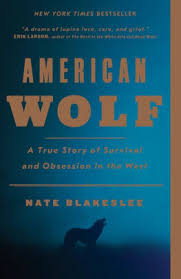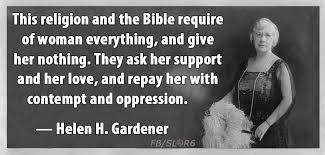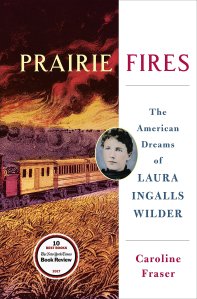 Gone With the Wind
Gone With the Wind
by Margaret Mitchell
So many thoughts … where to start?
I just read this epic Civil War novel for the third time in my life. The first time I read it, I was a mere teenager. My mother would park herself on the sofa every year when the movie was on TV and cry her way through it (if my memory serves me), and by the time I was a teen, I had seen the movie numerous times because of this. Being an avid reader, of course I read the book when I arrived at a certain age. In truth, though, I don’t have any memories of how the book made me feel all those years ago – I only remember that I liked it very much.
The second time I read it was almost ten years ago when it was chosen for my book club. Apparently I never wrote about it – I’ve searched – but I did give it five stars on Goodreads. I had hoped that I had written about it so that I could go back and compare and contrast my feelings about it then with my feelings about it now, but alas, no such luck. I do clearly remember loving it, appreciating all the details about the Civil War it contains, feeling a strong admiration for the character of Scarlett O’Hara (my goodness, that character – or at least her name – was the inspiration for my youngest child’s name!), feeling deeply invested in the story and the people who populated it, and wanting to go back to page one and read it all over again as soon as I finished it (I didn’t do that, though; it took almost ten years before I would reread it).
And now I am well into middle age and have read it for the third time.
Over the last few years, as I’ve become more aware of and invested in social justice issues, I’ve come across articles that mention Gone With the Wind as a monument to racism. The first time I came across an article like this, my knee-jerk internal response was defensiveness. How could one of my favorite novels be racist? I’m not racist! I understand how wrong racism is! It’s just a fictional story about a time and a place that no longer exists. That’s just the way things were back then.
You get the idea. The usual white-person thought process in the face of uncomfortable truths about racism and prejudice.
So, when I picked it up (actually, I listened to the audio book; for the record, the reader did an excellent job) this last time, I knew that I would see it through a different lens than I did a decade ago. Here are my main thoughts:
First and foremost, GWTW absolutely does romanticize slavery. It portrays the owning of human beings as property as a mutually beneficial institution, in which slave owners took good care of their “darkies” much like pets or small children. They fed them generously, nursed them in sickness, and generally appreciated their service like anyone today might appreciate the service of a paid, voluntary service provider. If an occasional “lick” was meted out, it was for the negro’s own good – but violence against slaves was exceedingly rare. And the slaves not only accepted their lot of being owned by other human beings, they were happy about it! They did not pine for freedom. They gladly accepted that they were put on this earth solely to serve their white folks. Any stories coming from the Yankees about whipping slaves or sending bloodhounds after runaway slaves or any mistreatment of negroes was propaganda. So, when the slaves were freed by the Emancipation Proclamation, it was a cruelty not only to the genteel Southerners, but the slaves themselves, who never wanted freedom in the first place, and couldn’t cope with it once they had it.
Well, that’s all propaganda if I ever heard it. I did a lot of eye rolling, jaw-dropping, and cringing through all of that. I felt ashamed that I had ever read this book before and not seen this, not given it much thought at all.
Speaking of Yankees, they are the bad guys in this story. Yankees are horrible, murderous, unscrupulous blights. Even after the war, the Yankees remain The Enemy. And I’m sure there is actually a lot of truth in this. As I read, I kept wondering when the South began to see the North as fellow Americans again.
Also, the Ku Klux Klan features prominently in this novel, and it’s portrayed as a necessary organization in the face of Reconstruction in order to preserve the Southern way of life. Members of the KKK are upstanding, respectable, honorable noble men – they are the good guys.
I know, right?
Two characters in the story, Ellen O’Hara (Scarlett’s mother) and Melanie Hamilton-Wilks (Scarlett’s sister-in-law, and the wife of the man Scarlett pines for) are portrayed as near saints. “Truly Great Ladies” they are called – meaning selfless, humble, kind, compassionate, gentle, forgiving, and utterly virtuous. However, they are both utterly devoted to “The Cause”: preserving the Southern way of life with its class hierarchy (of which they are at the top), and the institution of slavery. Gentle, self-effacing Melanie frets that she doesn’t want her child going to school with “pickaninnies.” So, really, how virtuous and saintly can someone be who has a bone-deep belief that owning other human beings and depriving them of liberty is the way things are supposed to be?
Now let us turn to Scarlett O’Hara. What I mostly remembered from having read the book before (and seeing the movie countless times) is that I admired her mainly for her bucking a lot of the conventions women of her time were expected to uphold. She spoke her mind at a time when women were expected to shut up and let the men do the talking – and thinking. She was resilient, a fighter – she single-handedly pulled her family out of poverty after the war. She went out in public while pregnant – a shocking and appalling thing to do at that time. She owned a business – and a man’s business at that (a mill and lumber yard) – and ran it, and was good at it, at a time when women were expected to stay home and darn socks. This admiration still holds. In those ways, I do still feel that she is a heroine of a kind.
However, Scarlett O’Hara is a bitch. She is jealous and petty and spiteful and  self-absorbed and conceited, and often just plain mean. She steps on people and doesn’t care who she hurts in order to get what she wants. By the end of the novel, which spans twelve years, she has burned nearly every bridge she ever had. She’s not actually a very likable person. I’m left wondering how Margaret Mitchell wanted her readers to feel about Scarlett. Did she intentionally create a character we aren’t supposed to like – was Scarlett meant to serve as a cautionary figure? Or was Scarlett meant to be an admirable heroine? Are we supposed to root for her or disdain her? Perhaps both.
self-absorbed and conceited, and often just plain mean. She steps on people and doesn’t care who she hurts in order to get what she wants. By the end of the novel, which spans twelve years, she has burned nearly every bridge she ever had. She’s not actually a very likable person. I’m left wondering how Margaret Mitchell wanted her readers to feel about Scarlett. Did she intentionally create a character we aren’t supposed to like – was Scarlett meant to serve as a cautionary figure? Or was Scarlett meant to be an admirable heroine? Are we supposed to root for her or disdain her? Perhaps both.
As far as the love story – gah. Scarlett spends the entire twelve years of the novel believing herself in love with Ashley Wilks, who is somebody else’s husband, as well as a pitiful, helpless, inept daydreamer of a man who leads Scarlett on by occasionally making proclamations of love for her in private, and on one occasion shoving his tongue down her throat (which she welcomed). In reality, he really just longs to fuck Scarlett, but he’s too honorable to actually cheat on his wife. Finally, at the end of the novel, Scarlett realizes that she never really loved Ashley (and she realizes that he only wanted into her bloomers), that she actually has loved Rhett for years without realizing it.
Rhett Butler is the bad-boy that women are believed to like so much. He doesn’t give a crap about convention, he makes piles of money by unscrupulous means, and of course he’s tall, dark, and handsome. And he’s in love with Scarlett from the first time he sets eyes upon her sixteen-year-old self when he is in his thirties (more on the prevalent lechery in the novel below). Eventually, Rhett becomes Scarlett’s third husband, but he marries her knowing she’s in love with Ashley, but then ends up filled with resentment towards her for being in (fake) love with Ashley. The relationship between Rhett and Scarlett is very fucked up once they get married. They can never, ever, ever be vulnerable with each other. Rhett plays very hard at not letting Scarlett know he actually loves her – and then resents her for not realizing that he loves her. They communicate mostly with barbs and sarcasm. Violence erupts between them occasionally. All in all, it’s a very unhealthy coupling. Funny that it’s often touted as “The Greatest Love Story Of All Time.” They end up destroying each other because they can never be real with each other until it’s too late.
So, back to the lechery. It’s plentiful in this story. Scarlett’s mother Ellen was only fifteen when she married Gerald O’Hara, who was in his forties. Scarlett is sixteen when the novel opens, and Rhett is thirty-three and falls in love with her. Sue Ellen, Scarlett’s younger sister, is engaged to a middle-aged man (whom Scarlett woos away from her sister and marries for his money, but I digress). It’s pretty gross and disturbing when you get right down to it. Also, the incest thing. Ashley and Melanie are first cousins and married. Ellen, Scarlett’s mother, was in love with her own cousin, Phillipe, before she married Gerald. I guess that sort of thing was accepted and common back in the day – but so was slavery.
All this being said, I confess I still enjoyed the book. A lot. From a purely literary standpoint, it’s a masterpiece – the writing is stellar, the characters and scenes come alive, it’s full of historical detail, and in all its nearly 1,000 pages, the story never drags. I feel guilty about liking it because it’s so problematic in so many ways. I also realize that I enjoy it specifically because I can only read it through the lens of a white person; I can’t imagine appreciating anything about it as a black person. Racism persists, and the fact that white people have written stories glorifying such a heinous, miserable institution as slavery and portraying people of color as barely human, and the fact that white people (like myself) still enjoy these stories nonetheless is evidence of that.













 self-absorbed and conceited, and often just plain mean. She steps on people and doesn’t care who she hurts in order to get what she wants. By the end of the novel, which spans twelve years, she has burned nearly every bridge she ever had. She’s not actually a very likable person. I’m left wondering how Margaret Mitchell wanted her readers to feel about Scarlett. Did she intentionally create a character we aren’t supposed to like – was Scarlett meant to serve as a cautionary figure? Or was Scarlett meant to be an admirable heroine? Are we supposed to root for her or disdain her? Perhaps both.
self-absorbed and conceited, and often just plain mean. She steps on people and doesn’t care who she hurts in order to get what she wants. By the end of the novel, which spans twelve years, she has burned nearly every bridge she ever had. She’s not actually a very likable person. I’m left wondering how Margaret Mitchell wanted her readers to feel about Scarlett. Did she intentionally create a character we aren’t supposed to like – was Scarlett meant to serve as a cautionary figure? Or was Scarlett meant to be an admirable heroine? Are we supposed to root for her or disdain her? Perhaps both.